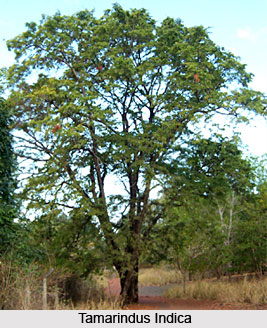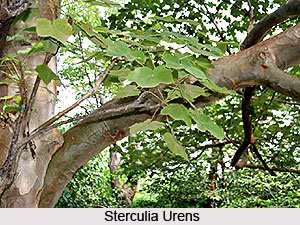 Flora of Ranthambore Tiger Reserve includes abundant of northern tropical dry deciduous forests. As per the bio-geographic classification, Ranthambore Tiger Reserve falls in semi-arid zone. The reserve forms a transition zone between the true desert and seasonally wet peninsular India. The forests of Ranthambore Tiger Reserve also belong to the sub group - Zizyphus scrub. The degradation stages found here are dry deciduous scrub and dry grass lands. The area is representative of dry deciduous Anogeissus pendula Forests sub type in association with Acacia, Capparis, Zizyphus and Prosopis species. Flora of Ranthambore Tiger Reserve is supported by the shallow perennial lakes, steep hills, gentle slopes, plateaus, narrow valleys, etc.
Flora of Ranthambore Tiger Reserve includes abundant of northern tropical dry deciduous forests. As per the bio-geographic classification, Ranthambore Tiger Reserve falls in semi-arid zone. The reserve forms a transition zone between the true desert and seasonally wet peninsular India. The forests of Ranthambore Tiger Reserve also belong to the sub group - Zizyphus scrub. The degradation stages found here are dry deciduous scrub and dry grass lands. The area is representative of dry deciduous Anogeissus pendula Forests sub type in association with Acacia, Capparis, Zizyphus and Prosopis species. Flora of Ranthambore Tiger Reserve is supported by the shallow perennial lakes, steep hills, gentle slopes, plateaus, narrow valleys, etc.
The main floral habitats of Ranthambore can be categorised as follows -
Steep slopes and cliffs: The vegetation on the steep hills is very scanty and the plants like Sterculia urens, Euphorbia neriifolia etc. are found scattered without having any significant under growths due to absence of deep soil. Out of all the different floral habitats of Ranthambore Tiger Reserve, these are the least disturbed by human activity. This is because such habitats are the least accessible and have the lowest useful resources. Further, the annual biomass production is low in such habitats. However, they are crucial habitats for a large number of reptile and birds, particularly the endangered Long-billed vultures.
Gentle slopes of hills: The gentle slopes maintain comparatively luxuriant vegetation due to better soil formation and water holding capacity. The typical dry deciduous elements found here include Anogeissus pendula, Sterculia urens, Boswellia serrata, Acacia catechu, Acacia leucophloea, Cassia fistula, Butea monosperma etc. Anogeissus pendula is the most dominant species here. The shrubs and some climbers further increase the density of flora in this habitat. Various herbs make green carpets on the slopes, particularly during rainy season. The biomass production in these habitats is very high and these are heavily used by almost all the wildlife.
 Plateaus: The open flat rocky areas maintain small and sparsely distributed trees and shrubs due to very thin layer of soil. However, the grasses, seasonal herbs and shrubs are abundant, except in the dry season. The biomass production in the plateaus is very low and highly seasonal. During the monsoon months, there are abundant grasses and herbs in the plateaus. These habitats are heavily used by wildlife and domesticated animals during the monsoons.
Plateaus: The open flat rocky areas maintain small and sparsely distributed trees and shrubs due to very thin layer of soil. However, the grasses, seasonal herbs and shrubs are abundant, except in the dry season. The biomass production in the plateaus is very low and highly seasonal. During the monsoon months, there are abundant grasses and herbs in the plateaus. These habitats are heavily used by wildlife and domesticated animals during the monsoons.
Valleys: The valleys of Ranthambore Tiger Reserve are characterised with fertile soil, sufficient watercourses, high humidity, etc. As a result, it supports comparatively thick vegetation and some evergreen elements also do exist here. The common trees found here are Anogeissus pendula, Syzygium cumini (jamun tree), Diospyros melanoxylon (tendu), Launea coromandelica (gurjan), Butea monosperma (chila), Ziziphus mauritiana (ber), Tamarindus indica (imli), Cassia fistula (amaltas), Mitragyna parvifolia (kadam), etc. The valleys also have the greatest variety of climbers, herbs and grasses. The valleys have the highest biomass production of all the habitats in this particular reserve and are the prime wildlife areas. However, outside the Ranthambore National Park, the valleys are inhabited by human settlements and are highly disturbed for the wildlife. Inside the Ranthambore National Park, they have the highest density of wildlife that is found in the entire reserve.
Lakes, reservoirs and its surroundings: These floral habitats provide variable plant communities controlled by the moisture content. The low-lying areas are also inhabited by certain trees like Phoenix sylvestris (khajur), Tamarindus indica (imli), Flacourtia indica, etc. Most of the wetlands of the Ranthambore, except those in the Ranthambore national park, are highly disturbed. Long periods of use by humans for cattle, irrigation, fishing, etc have affected these habitats.
Sandy plain: The species like Acacia nilotica (babul), Capparis decidua (karil), Prosopis juliflora (vilayati babul), Calotropis procera (ankra), etc. inhabit flat sandy localities of this tiger reserve.
The dominant species that constitutes near about 80 percent of the floral cover of Ranthambore Tiger Reserve is Anogeissus pendula (Dhok). It represents the edaphic climax. Generally found in the hilly areas and maintains luxuriant growth on the gentle slope of the hills due to better soil formation and water holding capacity. It is a slow growing species with varying breadth and height ranging from 10 to 15 metres. It is mostly found on hill slopes and valleys. The growth of Anogeissus pendula is generally stunted on plateaus where the residual soil is poor and shallow. Grewia flavescens is a common associate of this prominent genus.



















